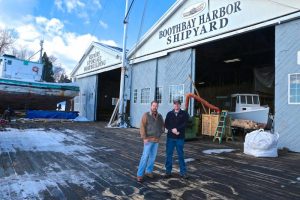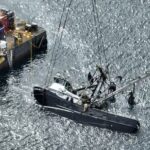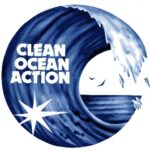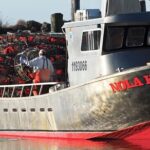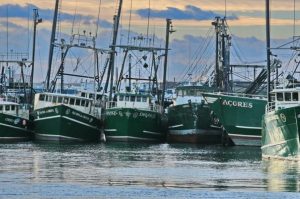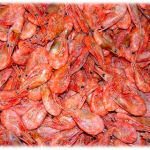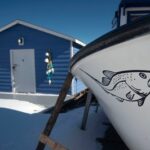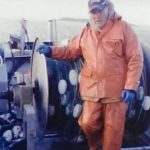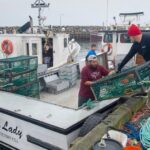Tag Archives: National Marine Fisheries Service
Senior NOAA appointee calls for retraction of paper on illegal fishing
 A top US official at the National Oceanic and Atmospheric Administration, who was recently appointed by President Donald Trump, has called for the retraction of a paper that suggests the country exports a significant amount of illegal, unreported, and unregulated fishing. The paper, published July 6 in Marine Policy, estimated that in 2015 approximately one-fifth of Alaska pollock exports to Japan were either illegal, unreported, or unregulated — a value of as much as $75 million. click here to read the story 15:17
A top US official at the National Oceanic and Atmospheric Administration, who was recently appointed by President Donald Trump, has called for the retraction of a paper that suggests the country exports a significant amount of illegal, unreported, and unregulated fishing. The paper, published July 6 in Marine Policy, estimated that in 2015 approximately one-fifth of Alaska pollock exports to Japan were either illegal, unreported, or unregulated — a value of as much as $75 million. click here to read the story 15:17
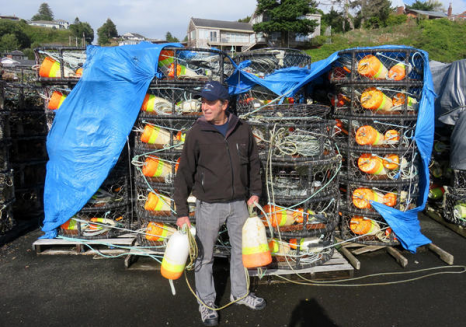
Fishermen: ‘We want to be proactive’ – Making The Sea Safer For Whales
More than 30 times this year, the federal government has received reports of whales tangled in fishing gear along the West Coast. Sometimes the whales manage to wriggle free. Other times you see heart-rending pictures on the news or a rescue mission. The culprit often involves Dungeness crab pot lines. Now Oregon crabbers are working with marine scientists to make the seas safer for whales and to avoid a black mark on their brand. Bob Eder has fished commercially out of Newport, Oregon for decades. “Over 45 years of pulling crab pots—I think I’ve probably hauled in close to a million—I’ve never encountered an entangled whale,” he said. ‘We want to be proactive’ click here to read the story 09:03
Cape fishermen push for action on habitat protection
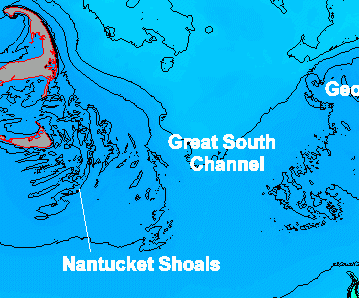 Part of managing fisheries is identifying and protecting that habitat. But the ocean is a big place and a difficult environment to do analysis. Politically, it’s also fractious terrain as fishermen worry about the balance between conservation and being shut out of traditional and productive fishing grounds. And so, it took 14 years for the New England Fishery Management to craft regulations protecting fish habitat, passing Omnibus Habitat Amendment 2 in June of 2015. But after over two years of review by the council and the National Marine Fisheries Service, it still hasn’t been implemented,,, click here to read the story 11:19
Part of managing fisheries is identifying and protecting that habitat. But the ocean is a big place and a difficult environment to do analysis. Politically, it’s also fractious terrain as fishermen worry about the balance between conservation and being shut out of traditional and productive fishing grounds. And so, it took 14 years for the New England Fishery Management to craft regulations protecting fish habitat, passing Omnibus Habitat Amendment 2 in June of 2015. But after over two years of review by the council and the National Marine Fisheries Service, it still hasn’t been implemented,,, click here to read the story 11:19
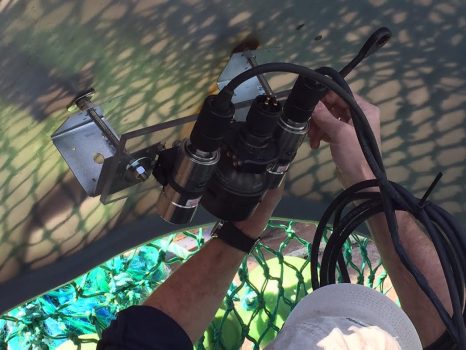
Live Cam May Show True Status of Atlantic Cod Fishery
Atlantic cod, New England’s most iconic fish, has been reported at historic lows for years, but fishermen hope a new video monitoring technique will prove there are more of the fish than federal surveyors believe. Ronnie Borjeson, who has been fishing for more than 40 years, says the federal surveys don’t match up with what fishermen are seeing. “I don’t care if you’re a gillnetter, a hook and line guy, a trawl guy,” he said, “there’s codfish everywhere up there. Everywhere. You can’t get away from them.” Borjeson helped test a video rig designed by researchers at the University of Massachusetts Dartmouth that allows them to record fish underwater and count them on the video later. With this rig, scientists can sample a larger area in the same amount of time and hopefully improve federal estimates of how many cod are left. click here to read the story 16:26
Counting Fish – A film by Don Cuddy click here to watch
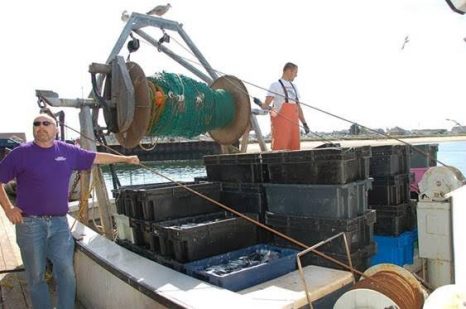
Why are fishermen guilty until proven innocent? A case against putting video cameras on every boat
As many of you may know, my husband filed a lawsuit against the National Marine Fisheries Service to stop them from requiring the fishermen to pay for the At-Sea monitors that the Fisheries Service requires ground fishermen to take on their boats. The cost is upwards of $700 a day, which is more than the small family owned fishing boats make here in New England. The Supreme Court decided not to hear their case which the lower courts had dismissed on a technicality because the suit was not filed within a 30 day time frame. Some people have suggested video monitoring as an alternative. I have addressed that in my comments below click here to read Ellen Goethels post 15:01
Conservationists plan to sue over right whale deaths
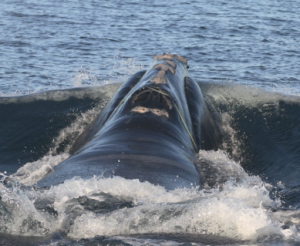 Animal conservation groups say they intend to sue the U.S. government unless North Atlantic right whales are better protected, following the deaths of 15 along U.S. and Canadian coasts. “We are literally facing the extinction of right whales due to human causes,” said Regina Asmutis-Silvia of Whale and Dolphin Conservation North America. In August, the National Oceanic and Atmospheric Administration, along with Fisheries and Oceans Canada, declared the deaths of North Atlantic right whales since June 7 an “unusual mortality event,” which triggered a focused and expert investigation into the causes. But the conservation groups want more. click here to read the story 10:01
Animal conservation groups say they intend to sue the U.S. government unless North Atlantic right whales are better protected, following the deaths of 15 along U.S. and Canadian coasts. “We are literally facing the extinction of right whales due to human causes,” said Regina Asmutis-Silvia of Whale and Dolphin Conservation North America. In August, the National Oceanic and Atmospheric Administration, along with Fisheries and Oceans Canada, declared the deaths of North Atlantic right whales since June 7 an “unusual mortality event,” which triggered a focused and expert investigation into the causes. But the conservation groups want more. click here to read the story 10:01
Enviro Groups Demand U.S., Canada Act to Save North Atlantic Right Whales
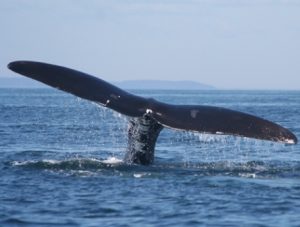 Conservation and animal-protection groups today sought action by the United States and Canada to prevent painful, deadly entanglements in fishing gear that threaten the critically endangered North Atlantic right whale. In letters to Canadian officials and the U.S. National Marine Fisheries Service, the groups demanded action to reduce risks to these imperiled whales. North Atlantic right whales, one of the world’s most endangered mammals with fewer than 500 individual animals remaining on Earth, lost nearly 3 percent of their population this year. click here to read the story 14:00
Conservation and animal-protection groups today sought action by the United States and Canada to prevent painful, deadly entanglements in fishing gear that threaten the critically endangered North Atlantic right whale. In letters to Canadian officials and the U.S. National Marine Fisheries Service, the groups demanded action to reduce risks to these imperiled whales. North Atlantic right whales, one of the world’s most endangered mammals with fewer than 500 individual animals remaining on Earth, lost nearly 3 percent of their population this year. click here to read the story 14:00
Strained Fluke Quotas, Hurricanes and Safe Harbor
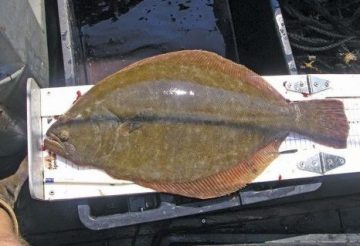 Less than a month after a bill granting vessels safe harbor in New York was signed by Governor Andrew Cuomo, a fishing vessel bound for North Carolina carrying 6,000 pounds of fluke has tested the new policy, straining New York’s federally designated fluke quotas. The F/V Rianda S., which has long been a part of the Montauk fleet, was in transit to land its fish in North Carolina, where it has fishing licenses, on Sept. 17 after fishing in federal waters when it encountered the rough seas generated by Hurricane José and requested safe harbor in Montauk. New York’s fluke fishery is closed for the month of September, due to banner fluke landings this summer that strained the state’s already low federally mandated quotas. click here to read the story 08:25
Less than a month after a bill granting vessels safe harbor in New York was signed by Governor Andrew Cuomo, a fishing vessel bound for North Carolina carrying 6,000 pounds of fluke has tested the new policy, straining New York’s federally designated fluke quotas. The F/V Rianda S., which has long been a part of the Montauk fleet, was in transit to land its fish in North Carolina, where it has fishing licenses, on Sept. 17 after fishing in federal waters when it encountered the rough seas generated by Hurricane José and requested safe harbor in Montauk. New York’s fluke fishery is closed for the month of September, due to banner fluke landings this summer that strained the state’s already low federally mandated quotas. click here to read the story 08:25
Governor Baker: Codfather windfall should fund electronic monitoring
 Baker, in a letter to federal fishing regulators late last month, sided with a dozen state lawmakers and local officials who are urging the proceeds from the forfeiture of Rafael’s fishing fleet and any financial penalties tied to his case to be used to pay for electronic catch monitoring. The money to pay for monitoring would relieve a major financial pressure on the state’s fishermen who have to pay for at-sea monitors who ensure compliance with catch-quotas designed to protect the health of groundfish stock. click here to read the story 18:25
Baker, in a letter to federal fishing regulators late last month, sided with a dozen state lawmakers and local officials who are urging the proceeds from the forfeiture of Rafael’s fishing fleet and any financial penalties tied to his case to be used to pay for electronic catch monitoring. The money to pay for monitoring would relieve a major financial pressure on the state’s fishermen who have to pay for at-sea monitors who ensure compliance with catch-quotas designed to protect the health of groundfish stock. click here to read the story 18:25
Countries Pledge To Recover Dwindling Pacific Bluefin Tuna Population
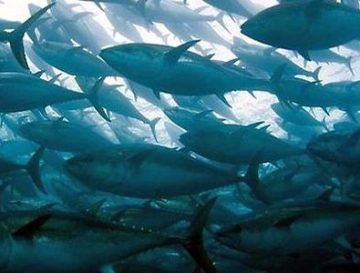 In a joint meeting Friday in Busan, South Korea, the two groups that manage Pacific bluefin tuna reached a historic long-term agreement that would put the species on the path to recovery. The Western and Central Pacific Fisheries Commission and the Inter-American Tropical Tuna Commission agreed to take steps to rebuild the population to 20 percent of historic levels by 2034 — a sevenfold increase from current levels. Stocks of Pacific bluefin have fallen to 2.6 percent of their historic size, with countries like Mexico, Japan, Korea and the U.S. exceeding fishing quotas within the last two years. click here to read the story 17:02
In a joint meeting Friday in Busan, South Korea, the two groups that manage Pacific bluefin tuna reached a historic long-term agreement that would put the species on the path to recovery. The Western and Central Pacific Fisheries Commission and the Inter-American Tropical Tuna Commission agreed to take steps to rebuild the population to 20 percent of historic levels by 2034 — a sevenfold increase from current levels. Stocks of Pacific bluefin have fallen to 2.6 percent of their historic size, with countries like Mexico, Japan, Korea and the U.S. exceeding fishing quotas within the last two years. click here to read the story 17:02
Federal Judge Evokes Dr. Seuss in Upholding Seafood Regulations
 Invoking Dr. Seuss, a federal judge on Monday quoted from the 1960 classic “One Fish Two Fish Red Fish Blue Fish” to uphold a regulatory regime intended to cut down on seafood fraud and protect U.S. fishers from unfair competition. Despite a challenge to the rule by a slew of U.S. seafood importers, harvesters and processors, U.S. District Judge Amit Mehta found that the traceability rule, which requires importers to document the supply chain of imports from their origin to their arrival in the U.S., was lawfully implemented by the National Marine Fisheries Service. click here to read the story 18:32
Invoking Dr. Seuss, a federal judge on Monday quoted from the 1960 classic “One Fish Two Fish Red Fish Blue Fish” to uphold a regulatory regime intended to cut down on seafood fraud and protect U.S. fishers from unfair competition. Despite a challenge to the rule by a slew of U.S. seafood importers, harvesters and processors, U.S. District Judge Amit Mehta found that the traceability rule, which requires importers to document the supply chain of imports from their origin to their arrival in the U.S., was lawfully implemented by the National Marine Fisheries Service. click here to read the story 18:32
Fishing Bycatch Regulations Pass Judge’s Sniff Test
 Federal regulators ducked a conservation-minded challenge Thursday concerning rules meant to minimize fishing bycatch. The National Marine Fisheries Service adopted the rules in question two years ago, with approval from the D.C. Circuit. Though the rules requires fishing vessels to occasionally have a biologist document the amount of fish caught and discarded, the group Oceana complained in a federal complaint that the infrequency of such observation undermines its efficacy as a serious check on fishing abuses. U.S. District Judge Ellen Segal Huvelle sided with the agency Thursday at summary judgment, saying the issue comes down to how the Fisheries Service allocates its funding for NMFS, short for standardized bycatch reporting methodology. click here to read the story 09:02
Federal regulators ducked a conservation-minded challenge Thursday concerning rules meant to minimize fishing bycatch. The National Marine Fisheries Service adopted the rules in question two years ago, with approval from the D.C. Circuit. Though the rules requires fishing vessels to occasionally have a biologist document the amount of fish caught and discarded, the group Oceana complained in a federal complaint that the infrequency of such observation undermines its efficacy as a serious check on fishing abuses. U.S. District Judge Ellen Segal Huvelle sided with the agency Thursday at summary judgment, saying the issue comes down to how the Fisheries Service allocates its funding for NMFS, short for standardized bycatch reporting methodology. click here to read the story 09:02
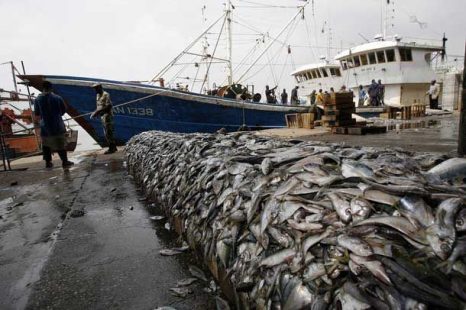
Fish Stocks And Our Balance Of Payments
Our balance of payments is overly burdened by our consumption of seafood: We import approximately 90% of the seafood that we eat. Given our natural resources, we should be net exporters of seafood. The total value of edible and non-edible fishery imports in the United States was $35.8 billion in 2016. The total value of edible and non-edible exports was $21.3 billion. The imbalance does not imply only a shipment of dollars abroad. It also implies a number of jobs exported, a number of jobs that could be created in this country, were we not to import that much more seafood than we export.,,, The reason for the imbalance in our accounts with other nations is not due to lack of fish in our waters. Not to put too fine a point on it, the imbalance is due to rules and regulations imposed by our National Marine Fisheries Service (NMFS) that prevent our fishermen from catching fish. click here to read the article by Carmine Gorga 09:21
Trump Admin Won’t List Non-Endangered Tuna As An Endangered Species
The Trump administration declined a petition to list the Pacific bluefin tuna as “endangered” Tuesday after the Department of Commerce (DOC) found that the fish was not facing any significant threat of extinction. A petition from the Center of Biological Diversity to list the fish under the Endangered Species Act (ESA) triggered the Commerce Department’s review. The review began under former President Barack Obama, and lasted for 12 months before the DOC’s National Marine Fisheries Service (NMFS) issued its findings, according to the notice published in the Federal Register. The Center for Biological Diversity claimed the tuna was at risk of extinction, based on findings by the International Union for Conservation of Nature (IUCN). click here to read the story 20:01
NMFS Requests Comment on a Change to Bluefin Regulations
 NOAA is seeking public comment regarding a request from the Cape Cod Commercial Fishermen’s Alliance for an exemption from a regulation that prohibits having unauthorized gear on board while fishing for, retaining, or possessing a bluefin tuna. In their application, the Alliance suggest that the use of electronic monitoring, already required by federal fishing authorities is a sufficient at-sea monitoring to verify that the catch of bluefin tuna occurred on authorized gear.,,, The National Marine Fisheries Service is accepting public comment on the matter. Comments must be received by August 1, 2017, and may be submitted online. click here to read the story 15:09
NOAA is seeking public comment regarding a request from the Cape Cod Commercial Fishermen’s Alliance for an exemption from a regulation that prohibits having unauthorized gear on board while fishing for, retaining, or possessing a bluefin tuna. In their application, the Alliance suggest that the use of electronic monitoring, already required by federal fishing authorities is a sufficient at-sea monitoring to verify that the catch of bluefin tuna occurred on authorized gear.,,, The National Marine Fisheries Service is accepting public comment on the matter. Comments must be received by August 1, 2017, and may be submitted online. click here to read the story 15:09
Lawsuit seeks to protect whales, turtles from California gillnets
 Oceana filed a lawsuit seeking to force U.S. fisheries managers to implement plans for restricting the number of whales and turtles permitted to be inadvertently snared in drift gillnets used for catching swordfish off California’s coast. The proposed rule, endorsed in 2015 by the Pacific Fishery Management Council, would place numerical limits on “bycatch” of whales and other marine creatures, and suspend swordfish gillnet operations if any of the caps are exceeded. The regulation was expected to gain final approval from the National Marine Fisheries Service. But it was withdrawn last month after the Commerce Department agency determined the cost to the commercial fishing industry outweighed conservation benefits, agency spokesman Michael Milstein said on Thursday. click here to read the story 17:11 Geoff Shester, a senior scientist at Oceana, who was “furious” when he found out the National Oceanic and Atmospheric Administration (NOAA) had decided to against adopting the rule. (lmao!) click here to read 17:13
Oceana filed a lawsuit seeking to force U.S. fisheries managers to implement plans for restricting the number of whales and turtles permitted to be inadvertently snared in drift gillnets used for catching swordfish off California’s coast. The proposed rule, endorsed in 2015 by the Pacific Fishery Management Council, would place numerical limits on “bycatch” of whales and other marine creatures, and suspend swordfish gillnet operations if any of the caps are exceeded. The regulation was expected to gain final approval from the National Marine Fisheries Service. But it was withdrawn last month after the Commerce Department agency determined the cost to the commercial fishing industry outweighed conservation benefits, agency spokesman Michael Milstein said on Thursday. click here to read the story 17:11 Geoff Shester, a senior scientist at Oceana, who was “furious” when he found out the National Oceanic and Atmospheric Administration (NOAA) had decided to against adopting the rule. (lmao!) click here to read 17:13
Time is running out to protect the Atlantic coast from Seismic Testing for oil exploration
 President Trump recently proclaimed that his administration is seeking “American energy dominance.” The reality is we’re already there. The United States produces more natural gas and oil than any other nation. We do import about 25% of our oil needs mostly from Canada and Mexico. However, that’s only because we export about one million gallons a week of the type of domestically produced oil we don’t want. The U.S. is beholding to no other country for our energy security.,,, The government estimates that up to 138,000 whales and dolphins could be injured or harassed if seismic airgun blasting was allowed in the Atlantic.,,, The government doesn’t even try to estimate the number of fish and invertebrates killed or harassed due to seismic airgun blasting. Ironically, in spite of its name the federal agency that approves applications for seismic testing, the National Marine Fisheries Service, requires absolutely no procedures to reduce the destructive impact of airguns on fish and invertebrates like squid. click here to read the op-ed 08:15
President Trump recently proclaimed that his administration is seeking “American energy dominance.” The reality is we’re already there. The United States produces more natural gas and oil than any other nation. We do import about 25% of our oil needs mostly from Canada and Mexico. However, that’s only because we export about one million gallons a week of the type of domestically produced oil we don’t want. The U.S. is beholding to no other country for our energy security.,,, The government estimates that up to 138,000 whales and dolphins could be injured or harassed if seismic airgun blasting was allowed in the Atlantic.,,, The government doesn’t even try to estimate the number of fish and invertebrates killed or harassed due to seismic airgun blasting. Ironically, in spite of its name the federal agency that approves applications for seismic testing, the National Marine Fisheries Service, requires absolutely no procedures to reduce the destructive impact of airguns on fish and invertebrates like squid. click here to read the op-ed 08:15
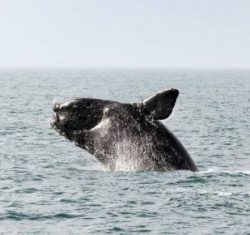
Beaufort Mayor Billy Keyserling renews push against seismic testing as a deadline nears
Beaufort Mayor Billy Keyserling has formally opposed federal permits that would allow companies conducting seismic testing to harass marine life as a byproduct of the process. A public comment period seeking input on the authorizations ends Thursday. Five companies have applied to use seismic air guns to survey the Atlantic Ocean for potential oil and gas deposits. Seismic testing requires separate approval from the National Oceanic and Atmospheric Administration for the companies “to incidentally, but not intentionally, harass marine mammals.” The proposed testing would violate federal law by affecting more than a small number of animals and would have more than the “negligible impact” required for the authorizations,, click here to read the story 17:26
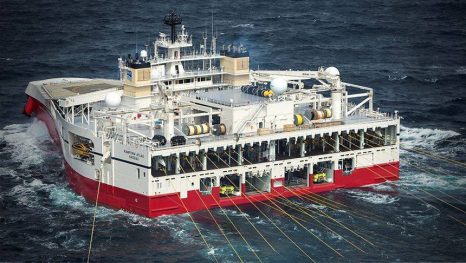
Rutherford, others sign letter opposing Atlantic coast seismic testing for oil exploration
The same day that President Donald Trump touted new energy policies during a speech at the U.S. Department of Energy that he said were part of a “golden era of American energy,” Rep. John Rutherford’s office released a letter signed by him more and than 100 other members of Congress that voiced opposition to the use of a controversial oil and gas exploration technique off the Atlantic Coast. “We are writing in strong opposition to your recent secretarial order to move forward with offshore oil and gas exploration in the Atlantic Ocean,” the letter, signed by members of both parties and addressed to Department of Interior Secretary Ryan Zinke, began. “Offshore oil and gas exploration, the first step of which is seismic air gun testing, puts at risk coastal economies based on fishing, tourism, and recreation,” it said before asking Zinke not to issue any permits for the surveys. click here to read the story 09:10
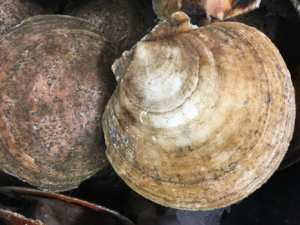
NMFS Proposes State Water Exemptions for Scallop Fisheries in Maine and Massachusetts
The National Marine Fisheries Service is seeking comment on a proposed rule that would revise the State Waters Exemption Program under the Atlantic Sea Scallop Fishery Management Plan. Under this proposed rule, vessels holding both a Massachusetts state scallop permit and either a Limited Access General Category (LAGC) Individual Fishing Quota (IFQ) or LAGC Northern Gulf of Maine (NGOM) Federal scallop permit could continue to fish in state waters once the Federal Total Allowable Catch (TAC) for the NGOM Management Area has been fully harvested. This action would also modify the State Waters Exemption for Maine, which already has this exemption for vessels holding state scallop permits and LAGC NGOM permits, to include vessels that have both a state scallop permit and an LAGC IFQ permit. Read the notice in the Federal Register 12:17
The “Redheaded Stepchild of Fishing” – Controversial drift-gill net fishery wins long-fought battle
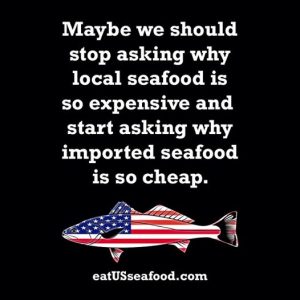 Federal fishery managers denied a proposal this week to immediately shut down Southern California’s most controversial fishery in the event that wide-mesh gill nets accidentally kill a handful of certain marine mammals or sea turtle species. The swordfish and thresher shark fishery will remain open, even if it kills several whales or sea turtles, the NOAA’s National Marine Fisheries decided. The decision not to institute so-called hard caps on the fishery comes after a public review period initiated last year was extended to discuss the law proposed by the state’s Pacific Fishery Management Council in 2014. For the few dozen fishers who still catch swordfish and thresher sharks off Southern California in deep-water drift gill nets, the decision brought a big sigh of relief. click here to read the story 08:38
Federal fishery managers denied a proposal this week to immediately shut down Southern California’s most controversial fishery in the event that wide-mesh gill nets accidentally kill a handful of certain marine mammals or sea turtle species. The swordfish and thresher shark fishery will remain open, even if it kills several whales or sea turtles, the NOAA’s National Marine Fisheries decided. The decision not to institute so-called hard caps on the fishery comes after a public review period initiated last year was extended to discuss the law proposed by the state’s Pacific Fishery Management Council in 2014. For the few dozen fishers who still catch swordfish and thresher sharks off Southern California in deep-water drift gill nets, the decision brought a big sigh of relief. click here to read the story 08:38
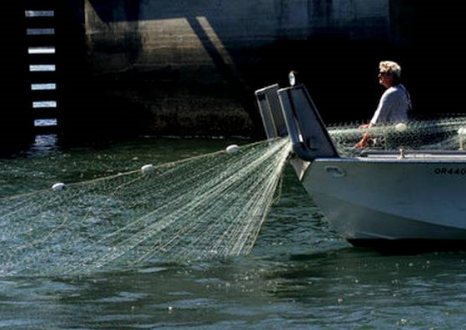
US cancels new protection for endangered West Coast whales
The Trump administration on Monday threw out a new rule intended to limit the numbers of endangered whales and sea turtles getting caught in fishing nets off the West Coast, even though the fishing industry had proposed the measure. The National Marine Fisheries Service said it decided the new protection was not warranted. The action is one of the first by the Trump administration targeting protections for threatened species off the Pacific coast, said Catherine Kilduff, an attorney for the Center for Biological Diversity conservation group. The regulation was designed to reduce the numbers of humpback whales, leatherback sea turtles and other large creatures that accidentally become tangled in mile-long nets set adrift by commercial fishermen overnight to catch swordfish off California and Oregon. click here to read the article (read between the lines, folks) 18:00
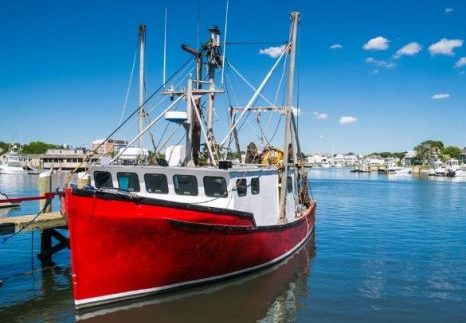
Advancing fishing rule aims to protect deep-sea coral in New England waters
Fishing trawlers bring in an average of $6.4 million annually to Bay State ports from fish scooped off seabeds 600 meters or more below the surface of New England waters. In an effort to save coral on the ocean floor, the New England Fisheries Management Council is advancing a proposed restriction on draggers and trawlers fishing at those depths. The council’s Habitat Committee signed off Tuesday on the proposal, which affect fishing operations in a roughly 25,000 square mile area. If it is passed by the full council it would need to go through the National Marine Fisheries Service, also known as NOAA Fisheries, before it would go into effect. Environmental groups Wild Oceans, Earthjustice, Pew Charitable Trusts and Conservation Law Foundation urged the council’s scientists to study an alternative proposal, which they said would protect more coral than the plan the council advanced. The council agreed to study the conservation groups’ proposal. click here to read the story 16:30
Coastal Alabama Rep. slams NOAA ‘junk science’ behind shortest red snapper season ever
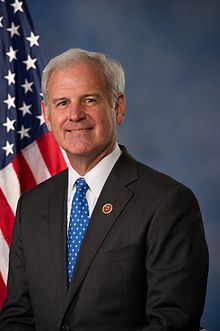 Alabama Rep. Bradley Byrne shares the frustration of most in his district when it comes to the federal government’s overregulation of red snapper fishing. According to him, Coastal Alabamians are infuriated over the announcement that the much-anticipated red snapper season will only last a pitifully short three days. He believes they have a right to be mad. “[My constituents] have every reason to be outraged, because they have a right to fish in the waters of the United States, and they’re being deprived of that right by junk science. Put junk science in, you’re going to get a bad result out, and that’s exactly what we’ve got here,” Rep. Byrne said. Every year, the National Marine Fisheries Service (NMFS), which is managed by the National Oceanic and Atmospheric Administration (NOAA), announces how long the fishing season will last based on the size and stock of red snapper fish. click here to read the story 13:45
Alabama Rep. Bradley Byrne shares the frustration of most in his district when it comes to the federal government’s overregulation of red snapper fishing. According to him, Coastal Alabamians are infuriated over the announcement that the much-anticipated red snapper season will only last a pitifully short three days. He believes they have a right to be mad. “[My constituents] have every reason to be outraged, because they have a right to fish in the waters of the United States, and they’re being deprived of that right by junk science. Put junk science in, you’re going to get a bad result out, and that’s exactly what we’ve got here,” Rep. Byrne said. Every year, the National Marine Fisheries Service (NMFS), which is managed by the National Oceanic and Atmospheric Administration (NOAA), announces how long the fishing season will last based on the size and stock of red snapper fish. click here to read the story 13:45
As I see It: More US action required on New England fishery – Congressman Raúl M. Grijalva
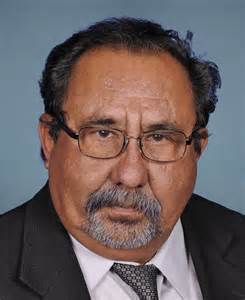 On March 30, Carlos Rafael – the infamous “Codfather” of New Bedford, Massachusetts – pleaded guilty to federal fraud charges.,,, His fraud in mislabeling nearly 800,000 pounds of fish to evade quotas on cod, flounder and sole was so massive that scientific studies using the misreported landings may have to be scrapped, adding additional uncertainty to a fishery that has been teetering on the edge of complete collapse for decades.,,, The Fisheries Service must also start saying ‘no’ to the New England Fishery Management Council, a regional regulatory body that includes many industry representatives.,,,It’s time to end the convenient and false narratives that blame science-based fisheries regulations and ocean conservation initiatives, such as the Northeast Canyons and Seamounts Marine National Monument on the edge of the continental shelf off Cape Cod, for problems they did not create. Click here to read the op-ed 09:41
On March 30, Carlos Rafael – the infamous “Codfather” of New Bedford, Massachusetts – pleaded guilty to federal fraud charges.,,, His fraud in mislabeling nearly 800,000 pounds of fish to evade quotas on cod, flounder and sole was so massive that scientific studies using the misreported landings may have to be scrapped, adding additional uncertainty to a fishery that has been teetering on the edge of complete collapse for decades.,,, The Fisheries Service must also start saying ‘no’ to the New England Fishery Management Council, a regional regulatory body that includes many industry representatives.,,,It’s time to end the convenient and false narratives that blame science-based fisheries regulations and ocean conservation initiatives, such as the Northeast Canyons and Seamounts Marine National Monument on the edge of the continental shelf off Cape Cod, for problems they did not create. Click here to read the op-ed 09:41
A Hudson Canyon-sized power struggle is developing 100 miles off N.J.’s coast
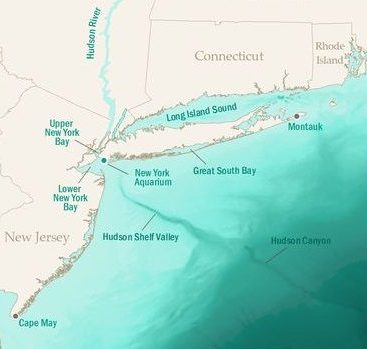 In November 2016, the Wildlife Conservation Society nominated Hudson Canyon to be designated a National Marine Sanctuary. The WCS selected the canyon, the largest submarine crevice on the Atlantic Coast, due to its wide biodiversity. The canyon is home to more than 20 protected species, including the North Atlantic right whale, according to the conservation group. “This is a canyon the scale of the Grand Canyon,” said Jon Forrest Dohlin, the Vice President of the WCS and the director of the New York Aquarium. “It seemed like something that could really benefit from awareness and protection.” But commercial fishermen see this as the latest in a series of moves that could lead to increased fishing restrictions from the Gulf of Maine to the Gulf of Mexico. Commercial fishermen in New Jersey fear losing access to a profitable fishing ground. According the Greg DiDomenico, the executive director of the Garden State Seafood Association, click here to read the story 09:54
In November 2016, the Wildlife Conservation Society nominated Hudson Canyon to be designated a National Marine Sanctuary. The WCS selected the canyon, the largest submarine crevice on the Atlantic Coast, due to its wide biodiversity. The canyon is home to more than 20 protected species, including the North Atlantic right whale, according to the conservation group. “This is a canyon the scale of the Grand Canyon,” said Jon Forrest Dohlin, the Vice President of the WCS and the director of the New York Aquarium. “It seemed like something that could really benefit from awareness and protection.” But commercial fishermen see this as the latest in a series of moves that could lead to increased fishing restrictions from the Gulf of Maine to the Gulf of Mexico. Commercial fishermen in New Jersey fear losing access to a profitable fishing ground. According the Greg DiDomenico, the executive director of the Garden State Seafood Association, click here to read the story 09:54
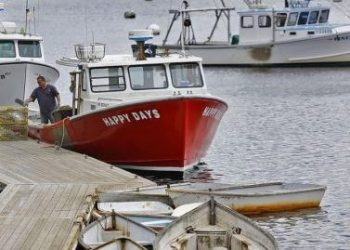
South Shore lobstermen dismayed by failed bid for longer season
Lobstermen are busy loading their boats with traps and buoys and getting their gear back in the water after a three-month closure lifted this week for most of the South Shore. But Marshfield lobsterman John Haviland said he is starting the season feeling more disenchanted than ever after federal regulators turned down a proposal to allow lobstermen to fish year-round with a new rope line designed to reduce the chance of entangling endangered whales. “I’m disappointed that we put three years worth of research and meetings into trying to do the right thing, and it was not successful,” Haviland, president of the South Shore Lobster Fishermen’s Association, said. “It makes you question if you should keep doing the one thing you’ve always done.” Since 2015, federal regulations have banned the use of lobstering equipment from Feb. 1 to April 30 off Cape Cod Bay and beyond, shutting down the local industry for the winter. The goal is to reduce the chances of whales becoming entangled in the gear. click here to read the article 12:09
What’s next for Carlos Rafael’s fishing permits?
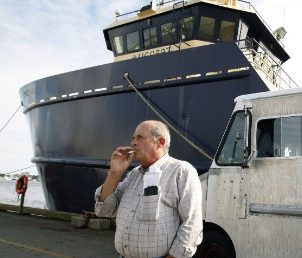 New Bedford – Almost a week ago, City Council members asked for their names to be attached to a late file agenda pertaining to Carlos Rafael’s groundfish permits. Behind Ward 4 Councilor Dana Rebeiro, Council President Joseph Lopes and Ward 5 Councilor Kerry Winterson, the council requested “that the Committee on Internal Affairs meet with Attorney General Maura Healey and NOAA to discuss how current owners and mariners operating in New Bedford have the first right of refusal to acquire licenses to be auctioned as result of the plea agreement in the case of The United States vs. Carlos Rafael… The written motion was a bit premature. Following Thursday’s council meeting, Rebeiro acknowledged the measure was “to get ahead of the ball” in terms of where the permits may land. So what’s next? click here to read the story 19:11
New Bedford – Almost a week ago, City Council members asked for their names to be attached to a late file agenda pertaining to Carlos Rafael’s groundfish permits. Behind Ward 4 Councilor Dana Rebeiro, Council President Joseph Lopes and Ward 5 Councilor Kerry Winterson, the council requested “that the Committee on Internal Affairs meet with Attorney General Maura Healey and NOAA to discuss how current owners and mariners operating in New Bedford have the first right of refusal to acquire licenses to be auctioned as result of the plea agreement in the case of The United States vs. Carlos Rafael… The written motion was a bit premature. Following Thursday’s council meeting, Rebeiro acknowledged the measure was “to get ahead of the ball” in terms of where the permits may land. So what’s next? click here to read the story 19:11








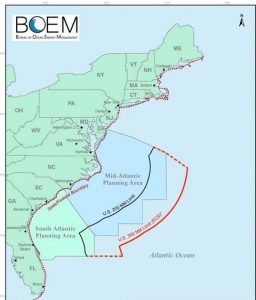
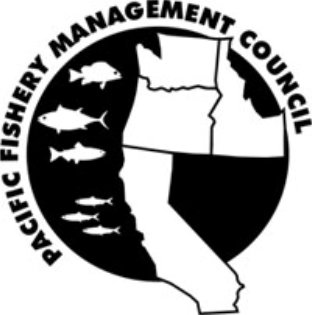 The Pacific Fishery Management Council on April 27 recommended new regulations governing the use of electronic equipment to monitor at-sea discards of target, non-target and prohibited fish for certain West Coast groundfish fisheries. If approved by National Marine Fisheries Service (NMFS), this will mark the culmination of a four-year process to develop and implement regulations for electronic monitoring system use in these fisheries. Under the council’s catch share program, every vessel must carry a human observer to help monitor catch that is allocated to each vessel owner, including discards that happen at sea.
The Pacific Fishery Management Council on April 27 recommended new regulations governing the use of electronic equipment to monitor at-sea discards of target, non-target and prohibited fish for certain West Coast groundfish fisheries. If approved by National Marine Fisheries Service (NMFS), this will mark the culmination of a four-year process to develop and implement regulations for electronic monitoring system use in these fisheries. Under the council’s catch share program, every vessel must carry a human observer to help monitor catch that is allocated to each vessel owner, including discards that happen at sea. 



























